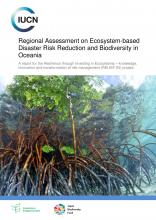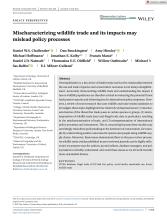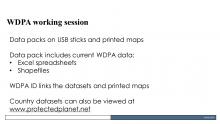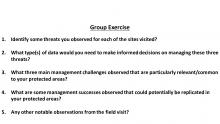Bait colour and moisture do not affect bait acceptance by introduced Pacific rats (Rattus exulans) at Henderson Island, Pitcairn Islands.


Island and Ocean Ecosystems, BRB
Available Online
Bond, A.L.
,
McClelland, G.T.W.
,
OKeefe, S.
,
Warren, P.
2019
Rodent eradications are a useful tool for the restoration of native biodiversity on islands, but occasionally these operations incur non-target mortality. Changes in cereal bait colour could potentially mitigate these impacts but must not compromise the eradication operation. Changing bait colour may reduce mortality of Henderson crakes (Zapornia atra), an endemic globally threatened flightless bird on Henderson Island, Pitcairn Islands, South Pacific Ocean. Crakes had high non-target mortality in a failed 2011 rat eradication operation and consumed fewer blue than green cereal pellets. We examined which cereal bait properties influenced its acceptance by captive Pacific rats (Rattus exulans) on Henderson Island. We held 82 Pacific rats from Henderson Island in captivity and provided them with non-toxic cereal bait pellets of varying properties (blue or green, moist or dry). We estimated the proportion of rats consuming bait using logistic generalised linear mixed models. We found no effect of sex, females reproductive status, bait colour or bait moisture on rats willingness to consume baits. Rats bait consumption was unaffected by cereal bait properties (colour or moisture). The use of blue bait is unlikely to affect future eradication operational success but may reduce non-target mortality of Henderson crakes. Timing cereal bait distribution in relation to precipitation may also reduce crake mortality without compromising palatability to rats.









